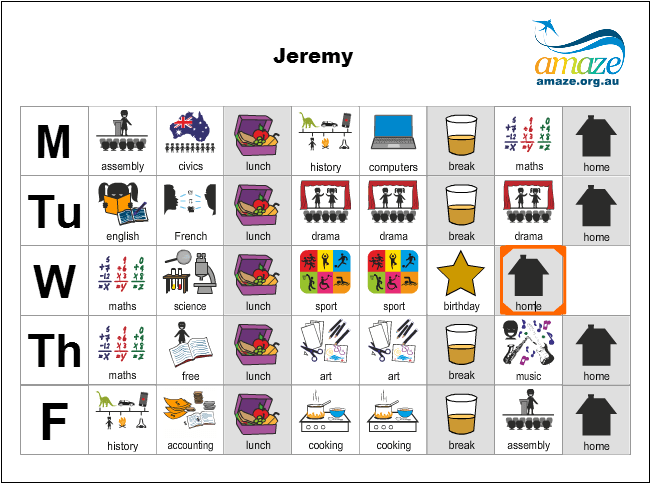Changes in expectations
An important vertical transition that faces most young people on the autism spectrum during the middle years is the transition to secondary education. This transition can be especially hard to navigate when primary schools and high schools are managed separately and operate on different campuses. Changes in people, expectations of increased independence and navigating a new environment may cause anxiety and stress for individuals on the autism spectrum.
Aussie Joe’s Transition Workbook is a useful resource which may assist children in moving from Primary to High School.
The transition to high school for typically developing children usually starts in the final year of primary school.
It may be beneficial to begin preparation earlier for young people with autism. Caregivers can seek support in transition planning for their child by talking directly to their current school. The following support services for schooling bodies in Tasmania may also provide assistance:
- Tasmanian Department of Education Learning Services
- The Catholic Education Office Student Support Program
- Tasmanian Independent Schools offer support within each school
Enrolling in school?
Enrolling or prospective parents may consider the following general questions helpful to ask when meeting with a school and its staff:
- What is your inclusion policy?
- Do you have a Learning Support Co-ordinator? (A Learning Support Co-ordinator is a dedicated staff member who helps support classroom teachers implement and monitor learning plans for individuals with autism or other additional needs)
- What is your IEP process, how are families included? (An IEP is short for “Individual Education Plan”. An IEP is a written document and is developed by a team that should include the child’s parents and school staff. The IEP is designed to provide goals and strategies on meeting the child’s individual short term and long term educational needs).
- What is your behaviour policy for students with additional needs?
- What plans/processes do you have for transitions?
- What extra supports might be available for my child?
- Is there extra support (Occupational Therapist, Speech Pathologist, Psychologist etc) available at the school or if my child has their own are they welcome to come in to the school?
- Does the school have a buddies or peer-support program?
- What assistance will be provided in the playground?
- What is the school’s anti‐bullying policy?
- How will the teacher and I communicate regularly?
Other questions parents/carers might ask, as well as a short video interview with parents discussing the process of choosing an appropriate school for a child with autism, can be accessed via The Raising Children’s Network website article ‘Choosing a secondary school for children with autism spectrum disorder’. Further information on supporting a young person with autism in their schooling for both parents/carers and teachers/school staff members can be obtained from the Amaze Classroom website.
Amaze Classroom contains succinct useful information and tools for supporting young people with autism in their learning including an easy to use, printable Visual Timetable Maker which can be personalised for each individual child.
Starting high school resources
Specific recommendations on the transition to high school can be obtained in the section ‘Entering or Leaving a New School’ within the Amaze Classroom website. Autism Tasmania also provides regular regional workshops for teachers and teachers’ aides and is able to inform schools about relevant national professional development workshops such as Positive Partnerships online teacher workshops.

